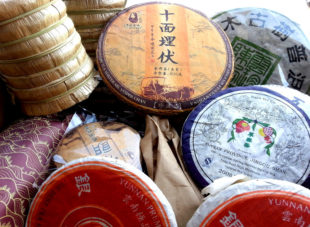What is raw “sheng” pu-erh tea?

What is raw “sheng” pu-erh tea? Sheng tea hails from jungle-like forests in the Yunnan regions of China. Although tea has long been said to be about 2000 years old, a recent discovery of far more ancient caves depicting tea cultivation and production now lead scholars to believe that tea is more like 10,000 years old. Truly an ancient brew.
There are two major types of Pu-erh tea: Raw (sheng) and Ripe (shou). The two Pu-erh types are distinguished by their respective fermentation processes. Both Pu-erh are made from the same raw materials – freshly harvested leaves that have been wilted, either fried manually or tumbled through a heated rotating cylinder, kneaded and sun dried in open air. The term Raw Pu-erh refers to the loose leaves, tea cakes or bricks made from raw materials without adding additional processing.
Sheng tea is best aged when it is fermented by surroundings that are sometimes hot and humid, sometimes cold and damp, and sometimes a little drier. Beneficial bacteria, yeasts and molds thrive in these conditions making a great aged tea.
Most sheng teas go through an awkward phase (equivalent of teenage years) from about age seven through age 16. This depends on how fast they ferment. They are usually best enjoyed well before or after this age. Raw Pu-erh can be consumed immediately to enjoy its fresh, floral or fruity flavors, or it can be left to age in a natural environment to achieve a mellower, smoother and more complex flavor.
To achieve such a complex brew, it takes about 20-30 years. Naturally aged Raw Pu-erh teas, particularly those made from premium raw materials, are the most sought after by tea connoisseurs.
Source: https://www.thespruce.com/shou-vs-sheng-766448

